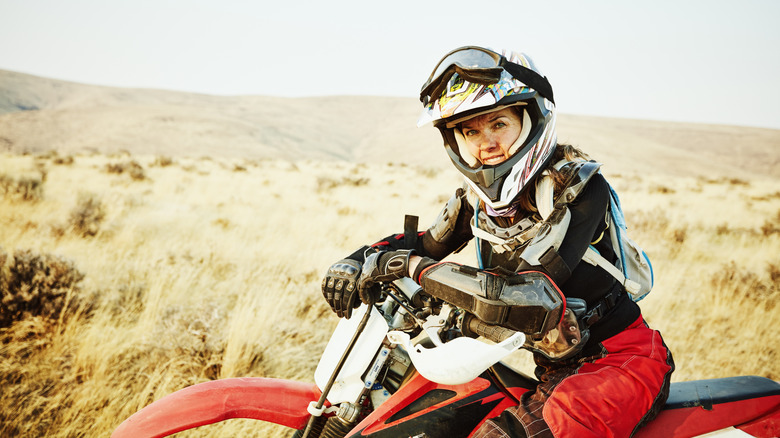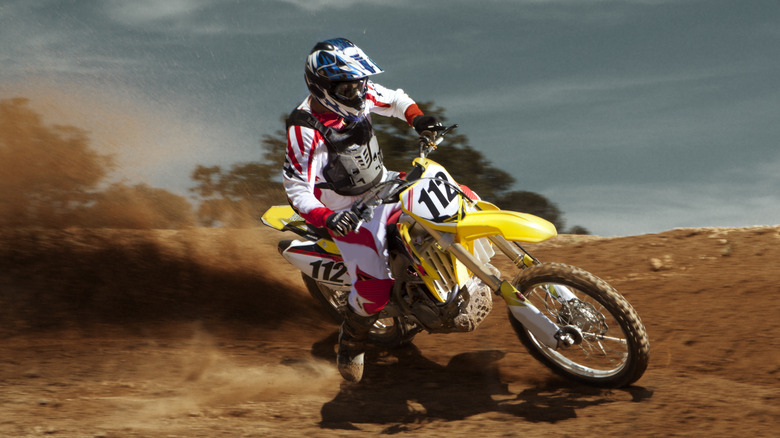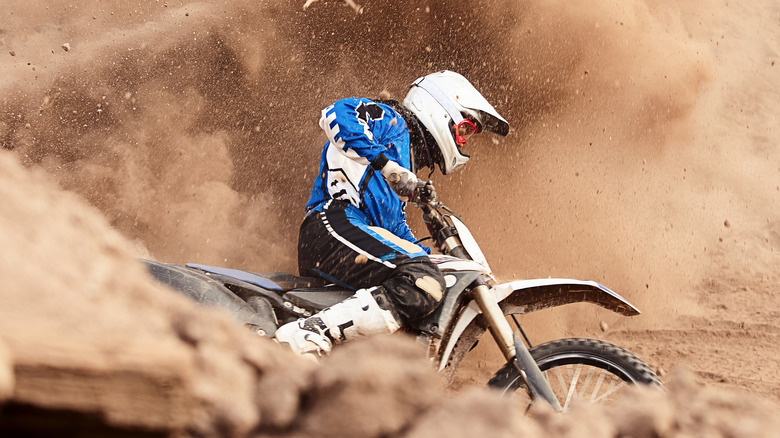How To Determine What Size Dirt Bike Helmet You Should Buy
There's no doubt about it — helmets can save your life. However, not all helmets are made alike, so you'll need to find the right design and fit for you. Apart from spanning the entirety of a rider's head, dirt bike helmets also need a separate section for goggles (not a built in visor) to avoid having the heat from your breath block your vision. In addition, it needs to have enough ventilation to make sure you don't pass out while on trails and use material that doesn't significantly increase the weight despite its size.
To know what size your dirt bike helmet should be, you'll need to measure the circumference of your head. To do this, you can use a soft cloth measuring tape, which can usually be found in most home sewing kits. Afterward, loop it above your eyebrows, passing above your ears, and through the thickest point of your head. Alternatively, if you don't have a soft cloth measuring tape, you can also use a non-stretchable string or shoelace and a ruler. Following the same tips above, you can loop the string or shoelace across your head, mark where both ends meet, and use a ruler to measure the length marked. Once you know the size of your head, you can check the sizing charts from your preferred dirt bike helmet brands. But if you find yourself in between sizes, it's always safer to go up a size, because you can always adjust the internal fit later.
Next steps after choosing a dirt bike helmet
Unlike motorcycle helmets, dirt bike helmets need specific features that are made to withstand specific challenges off-road. To start with, you should try to look for helmets that have passed approved safety standards. Depending on where you ride, the exact certifying body will vary, such as the Economic Commission for Europe (ECE) or the Department of Transportation (DOT) if you are based in the U.S. Although, it's important to note that there have been reports of fake DOT stickers before, so you'll still want to do additional research to make sure you're covered. Apart from government-sanctioned safety standards, nonprofits like Snell Foundation can also be a good indicator.
Once you've selected a helmet, the next thing you should learn is how to adjust it perfectly to your head. In some cases, manufacturers will be able to provide additional cheek pads and liners to help optimize the fit on your head. In general, the different pressure points can help give you a clue as to what part of the helmet needs adjustment, such as the sides or the forehead. You might not immediately feel the pressure points, so you'll need to wear your helmet for a few minutes to know. If you're not sure how to properly fit yourself, it's best to avoid buying your dirt bike helmet online. Instead, you can approach your local store for professional assistance, so you'll be guided during the selection and fitting process.
Staying safe off-road with the right gear
While incredibly important, your dirt bike helmet is only one part of the equation. Unlike street roads, dirt trails can be more unpredictable in nature, so you'll want to make sure not just your helmet fits right, but everything else too. Previously, our team has narrowed down some of the essential pieces of dirt bike riding gear from gloves, riding boots, googles, and more. For a better, safer experience, it's important to not only get the right size for your body, but also to check if it's time to replace them. In some cases, this might be due to our bodies changing as we age. In others, it can also be that the equipment may already have been through a significant amount of wear-and-tear, which can prevent them from doing their job.
And while it may be tempting to simply reuse your dirt bike helmet when you ride your street legal motorcycle, it's important to know that its design may cause trouble on the road. When it comes to buying a motorcycle helmet, its smooth surface is ideal to make sure it doesn't snag on the road during accidents. Because of this, you might want to consider a dual sport design or having two separate helmets instead. Either way, there are many ways you can customize your helmet, such as adding stickers, helmet covers, lights, or rubber accessories that will not affect your helmet's ability to save your life in an emergency.


